Explore the art of holding yarn correctly to enhance your crocheting skills and create beautiful, intricate designs with ease.
Holding yarn correctly while crocheting is vital for maintaining consistent tension and creating even stitches. The technique varies slightly depending on whether you’re right or left-handed, but the basic principle remains the same: you’ll need to thread the yarn through your fingers in a way that allows you to control the flow of yarn as you work.
This guide will provide a step-by-step process to hold yarn for crocheting, covering both right-handed and left-handed methods, including tips and tricks for achieving the perfect tension. Whether you’re a beginner or an experienced crocheter looking to refine your technique, this comprehensive guide has got you covered.
Key takeaways:
- Understand crochet tension for accurate patterns and consistent stitches.
- Proper tension prevents tight, stiff projects or loose, uneven work.
- Recognize signs of being a tight or loose crocheter.
- Tight crocheters: adjust yarn hold for moderate tension.
- Loose crocheters: tighten grip, decrease hook size, adjust yarn hold.
Understanding Crochet Tension
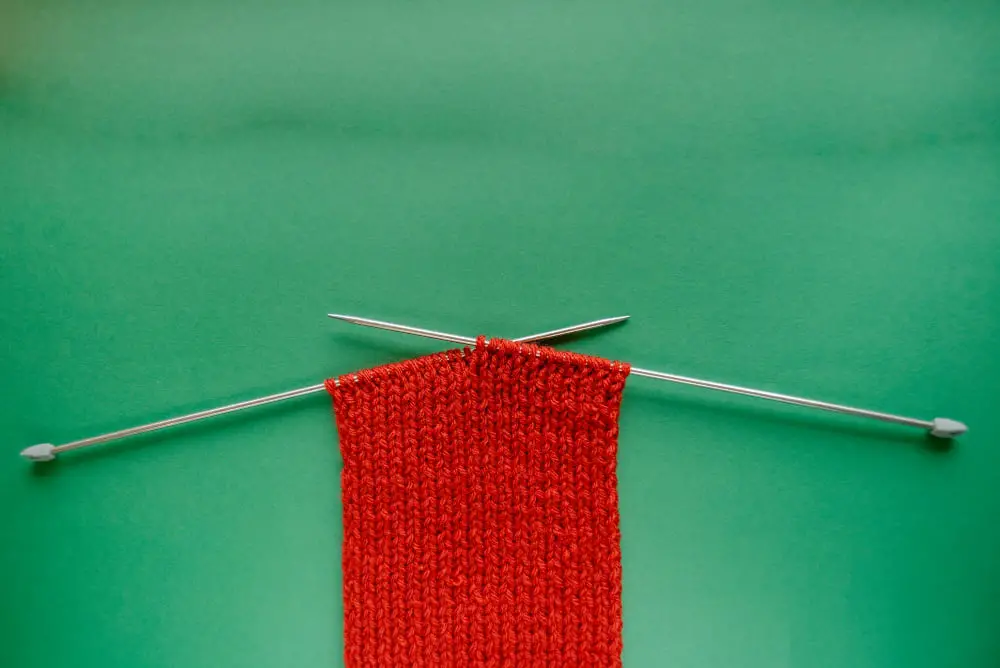
Crochet tension refers to how tightly or loosely you hold and work the yarn. This key aspect can heavily influence the overall look and size of your crochet project.
Firstly, having an understanding of your own crochet tension can help in accurately following patterns – an important skill especially for projects like garments or items that need to fit.
Secondly, managing crochet tension is essential to maintain consistent stitch sizes, leading to an even, aesthetically pleasing finish.
Thirdly, tension techniques are not one-size-fits-all. Different people have different natural tendencies and comfort levels. Some may be tight crocheters who hold the yarn and hook tightly while others may be loose crocheters, holding everything more lightly.
Lastly, improving your crochet tension comes with practice and self-awareness. No amount of reading tips or watching videos can replace the knowledge gained from hands-on experience.
So, experimentation and continuous practice are the best routes to mastering your own crochet tension. Coming up next, we will look at how to identify if you’re a tight or a loose crocheter.
The Importance of Yarn Tension in Crocheting
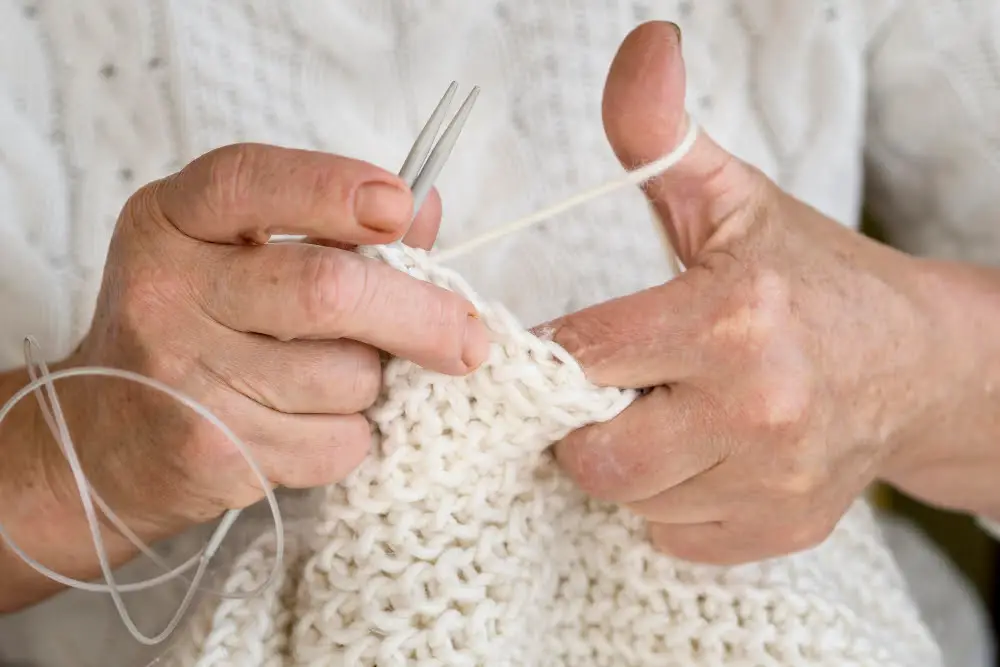
Proper yarn tension greatly enhances the uniformity and aesthetics of your crocheted projects. A good, consistent tension leads to even stitches, which are the cornerstone of neatly crafted crochet pieces.
Maintaining the right yarn tension for your project both prevents overly tight or loose stitches.
Overly tight stitches can lead to:
- Difficulty in inserting your hook into stitches.
- A finished piece that is stiff and does not drape well.
Too loose stitches can bring about:
- Unevenness in your work with larger loops or gaps.
- Leads to a finished piece that may not hold its shape.
To control yarn tension effectively:
- Regulate the speed of yarn flowing through your fingers.
- Become aware of how you are gripping your yarn.
- Practice holding the yarn differently to see what works for you.
Remember, the key to maintaining good yarn tension is practice and familiarity with the yarn and the technique. If yarn tension is an issue, it can always be improved through mindful practice and patience.
Recognizing If You’re a Tight Crocheter
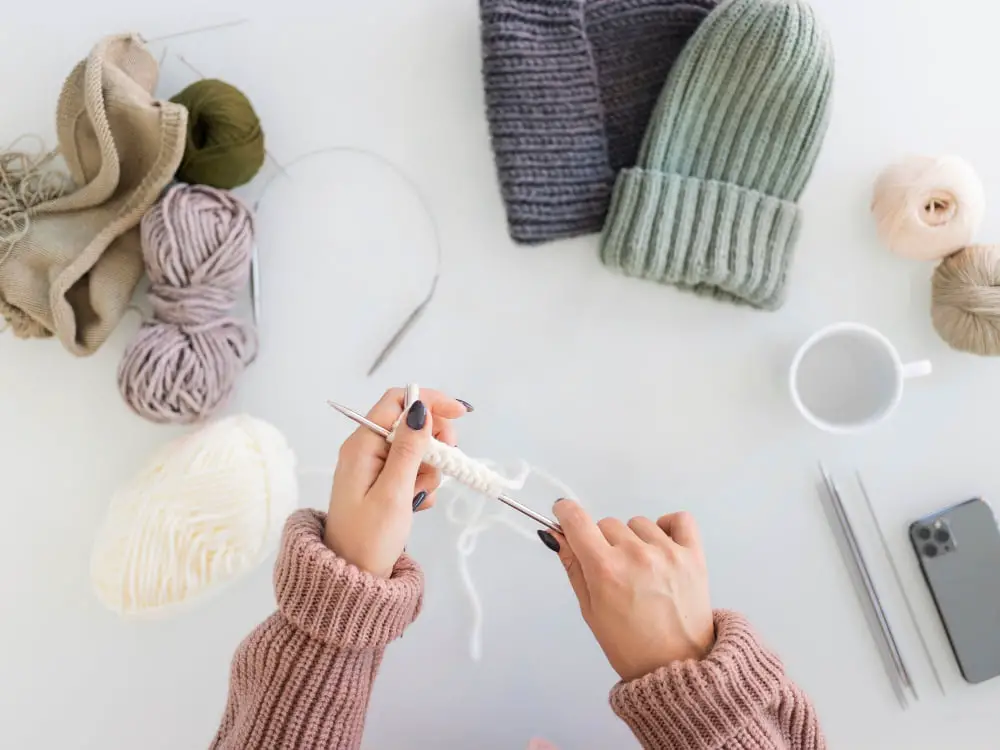
Recognizing if you’re a tight crocheter comes down to several notable signs:
Every stitch appears smaller than expected despite maintaining regular loops and using the recommended hook size, which indicates that the yarn is being pulled tight during crochet.
Your finished projects tend to turn out smaller than the pattern suggests they should be. This is because each tiny stitch effectively shrinks the piece as a whole.
Your work feels stiff or rigid, lacking the flexibility of nearly identical projects worked by other individuals.
Regular discomfort in your hands or fingers not caused by tools or technique directly may indicate tight crochet. This discomfort results from the excessive tension in the yarn and the consequent needed force to work stitches.
Finally, if the crochet hook frequently gets stuck in the fabric or stitches are challenging to pull through, it might be a sign of being a tight crocheter.
To address these tendencies, consider varying yarn-holding techniques, exploring yarn materials, reconsidering hook material choice, or learning to consciously relax your grip while working.
Recognizing If You’re a Loose Crocheter

Being a loose crocheter can be identifiable in a few ways. The stitches may appear larger than intended, with evident gaps occurring between them. This often results in the fabric appearing looser or more “drapery” than expected. The project might also take up more yarn than the pattern indicates.
To moderate this, a few steps can be considered:
- Tightening grip on the crochet hook: Try limiting the movement of the wrist and the fingers that control the hook.
- Decrease the hook size: Use a crochet hook that is one size smaller than recommended. It would still produce the correct size, but with a firmer fabric.
- Adjust the Yarn hold: How you hold the yarn could be letting too much yarn through each stitch. Consider changing the way of holding yarn to control this better.
- Practice: As with any skill, practice is crucial. Regular crocheting would invariably result in better grip and tension control.
Remember, there’s no wrong way to crochet as long as you’re happy with the results. It’s all about finding the method that suits your personal style, which can certainly encompass crocheting loosely.
Ideal Yarn Holding Techniques for Tight Crocheters
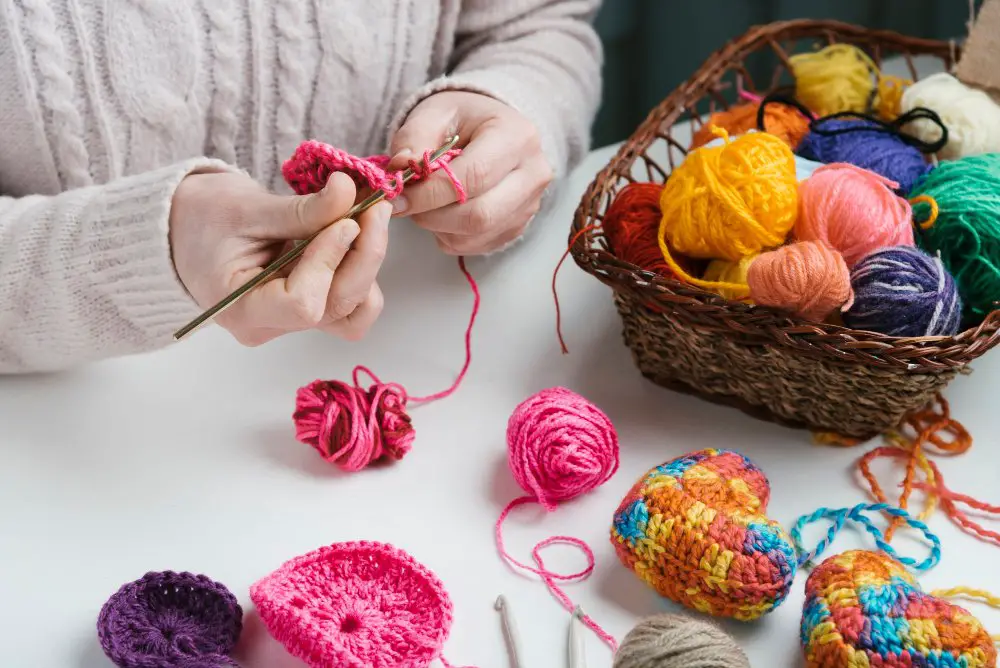
Tight crocheters often have yarn that’s wrapped too snugly around the hook. This can make crocheting more strenuous and time-consuming, as it can be difficult to insert the hook into stitches. Adjusting the way you hold the yarn can make a significant difference in easing tension:
- Hold yarn in your non-dominant hand and thread it through your fingers to create a moderate level of tension.
- Loop the yarn over your index finger, under your middle finger, over your ring finger, and under your pinky.
- Make sure the yarn slides easily through your fingers. If you feel a rigid tugging sensation, you’re holding it too tightly.
- Use your thumb and ring finger to grip the crochet work, steadying it as you use your crochet hook.
- Practice allows your hand to find a tension that is not too tight, but firm enough to hold the yarn in place.
Over time, you will become more comfortable holding the yarn and controlling tension. It won’t feel as loose or tight, and the movement will become more natural.
Ideal Yarn Holding Techniques for Loose Crocheters
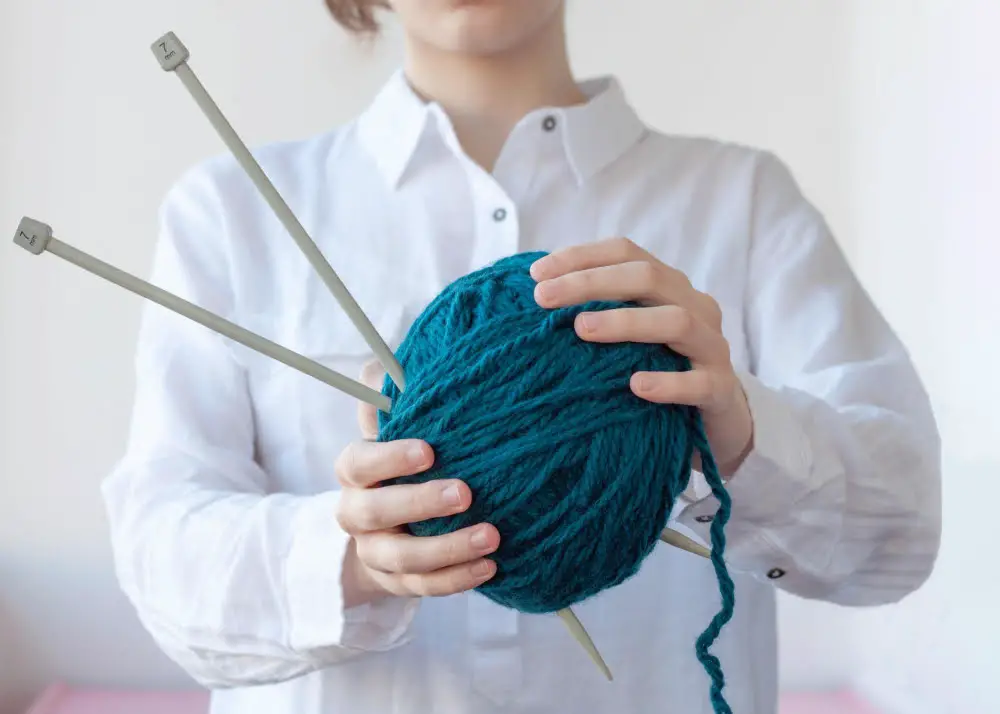
For those identified as loose crocheters, these are your key techniques.
- Positioning the yarn: Aim to have the yarn pass over your index finger, bending it at a 90-degree angle. This keeps the yarn fairly tight and prevents the stitches from being too loose.
- Using fingers: Your middle finger and thumb should hold the hook while your index finger controls the yarn tension. This positions your hands well to maintain a steady tension.
- Curling the pinky: Some find it helpful to curl their pinky finger around the yarn, adding an extra point of tension. Experiment with this method to see if it better controls your loose stitches.
- Trying the Pencil Grip: If the tension is still not ideal, consider the Pencil Grip. Hold the crochet hook as you would a pencil. It has been reported to provide a firmer grip as you work.
- Practicing consistency: Practice these techniques consistently, especially if it initially feels unfamiliar or awkward. Over time, your hands naturally find an agreeable way to hold the yarn, establishing a rhythm which will produce consistent stitches. Remember, patience is key as your muscle memory adjusts to these new techniques.
Ideal Yarn Holding Techniques for Comfort
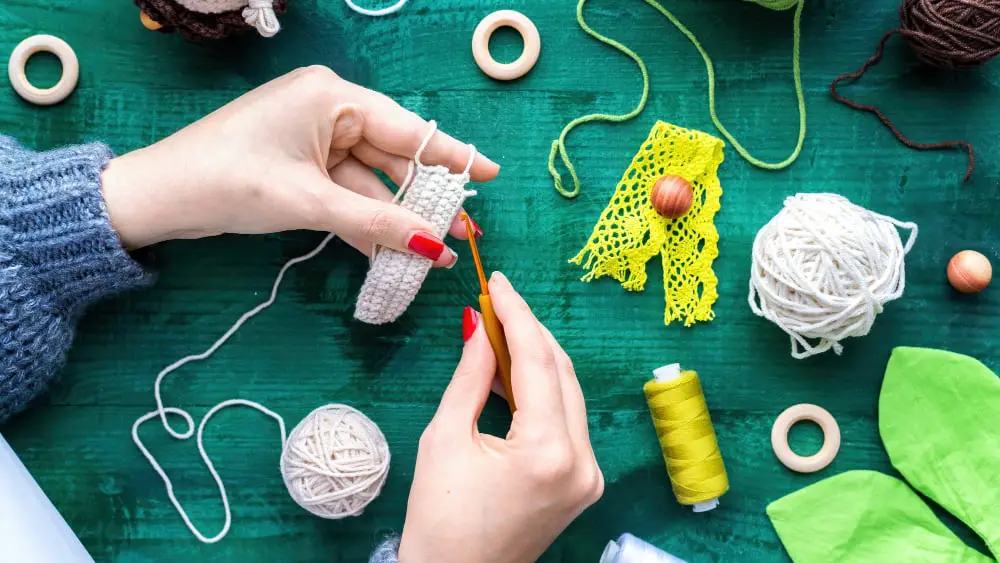
When yarn holding for comfort is the main objective, it’s essential to consider certain techniques and adapt them to your personal style and needs.
One method is the “pencil hold,” where the hook is grasped like a pencil, offering a lot of control over the yarn without putting strain on the wrist or fingers. This grip makes it easier to work for longer periods of time without tiring.
The “knife hold,” another useful technique, sees the hook being held like a knife, with the palm wrapped around the handle and the fingers guiding the yarn. Some crocheters find this position more relaxing, especially when working with thicker yarns.
Using ergonomic crochet hooks can also contribute to a more comfortable crochet experience. These hooks are designed with larger, cushioned handles that are gentle on the fingers and wrist, reducing strain.
Lastly, ensuring you regularly relax and stretch your hands, fingers, and wrists can make a significant difference. This small action can aid in preventing fatigue and promoting comfort while crocheting.
How to Control Your Yarn Tension in Crocheting

To achieve steady tension, thread the yarn through the fingers of your non-dominant hand. Start by extending your hand, spread your fingers slightly. Drape the yarn over your little finger and under your ring and middle fingers. It should go over your index finger towards the crochet hook held in your other hand.
Take note of your body posture and avoid tensing up your shoulder and arm muscles to prevent cramps. Practice maintaining an upright, relaxed position as you crochet.
Adjust the flow of yarn by gently lifting your fingers upward, increasing tension, or lowering your fingers, reducing tension.
Focus on creating consistent stitches. Tension will vary naturally as you work, but with practice, this system will give you greater control over yarn feed and tension variation.
Use quality yarn that’s not too slippery or prone to splitting, which can also affect your control over tension.
Regularly take breaks to rest your hands and exercise your fingers to reduce the chance of discomfort or strain.
Remember, the secret to maintaining consistent tension is practice and patience. If one method doesn’t seem comfortable or effective, don’t be discouraged. Experiment with different techniques adapted to your preference and comfort.
Best Ways to Hold Yarn and Control Tension in Crocheting

Controlling tension while crocheting starts with how you hold your yarn. Three common methods namely; the Pencil Hold, Over-the-Index Finger Hold, and the Pinky Wrap each offer unique benefits.
Pencil Hold: The yarn is draped over the little finger and then under the ring and middle fingers, akin to holding a pencil. This position allows for natural movements of the fingers and wrist, facilitating yarn flow and tension control.
Over-the-Index Finger Hold: The yarn is draped over the index finger, wraps under the middle and ring fingers, and rests over the little finger. This hold allows a free flow of yarn for consistent tension and is ideal for speed crocheting.
Pinky Wrap: Involved winding the yarn around the pinky finger, and it’s ideal for tight crocheters aiming to loosen tension. The yarn’s route is under the ring and middle fingers, over the index finger. This helps maintain a constant yet controlled flow of yarn.
Each method requires practice but once mastered, allows for smooth crocheting with optimal tension control. Find the one that fits your hand movements and comfort level for a better crochet experience.
Crochet Techniques for Better Yarn Handling

The magic of crocheting is attained through deliberate yet flexible hold and control of yarn.
First thing to consider is the comfortable positioning of the fingers. The yarn should generally wrap around the pinky finger and then pass through the middle and index finger. This technique can help control the flow of the yarn effectively.
The crochet hook must be held firmly yet lightly without any stress on the hand or wrist. Either a pencil or a knife hold can be employed which refers to how the crochet hook is held, similar to holding a pencil or a knife.
Efficient control of yarn tension is also vital, as too loose or too tight yarn can affect the outcome of your crochet project. Constant practice is the sure way to accurately attain the right tension.
Another element that can affect your yarn handling is the type of yarn you are using. Thicker yarns may require a looser grip, while thinner yarns may need a tighter control. Familiarize yourself with the properties of different types of yarn.
Finally, remember that there is no one-size-fits-all method. Every crocheter has unique handshapes and preference. Experiment with different positions and techniques until finding the most comfortable and efficient way for you. Keep practicing the chosen method to ensure consistent results in your crochet projects.
FAQ
What are the key differences between holding yarn for crocheting and knitting?
The key differences between holding yarn for crocheting and knitting lie in the fact that, in crocheting, the yarn is typically held in the left hand and controlled by the index finger, while in knitting, it can be held either in the right hand (English style), or in the left hand (Continental style), with tension maintained through different methods depending on the style.
How does yarn tension impact the quality of crochet work?
Yarn tension impacts the quality of crochet work by determining the uniformity and size of the stitches, with inconsistent tension leading to uneven or irregular stitches, and overly tight or loose tension potentially causing the finished piece to warp or become misshapen.
Could you share different techniques to wrap yarn around fingers when crocheting?
Common techniques to wrap yarn around fingers when crocheting include the yarn over, the index finger wrap, and the middle finger wrap.





